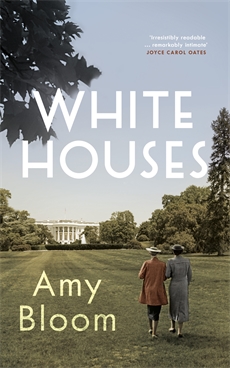 White Houses
White Houses
by Amy Bloom
Allen & Unwin
Although Amy Bloom states that she worked from books by actual historians, the creative writing professor declares her book a work of fiction, from beginning to end. There are certainly numerous facts to work from. Franklin Roosevelt occupied the White House for a record four terms – from 1933 until his death in 1945. His 40 year marriage to Eleanor began in 1905 but he had numerous affairs.
In 1933, journalist and known lesbian Lorena Hickok (Hick to her friends) moved into the White House and her relationship with the First Lady was an open secret that provided 3500 letters between the two women. The controversy historians have argued about is the physicality of the love affair and whether the women went beyond kisses and hugs.
The Little White House in Warm Springs Georgia was bought by Franklin when he knew he’d never walk again and he renovated it and opened it to other polio sufferers to use. He enjoyed bathing in the therapeutic waters and that was where he died, in the company of one of his mistresses. Of course, he maintained that since he was paralysed from the waist down, he was “officially blameless as far as the ladies were concerned”.
Taking on Hick’s voice, Bloom tells the back stories of both women as well as the ups and downs of eleven years of being the ‘first friend’. Eleanor’s ‘Dearest in All The World’ points out that it is devotion that makes a relationship and sex is “like a short swim in a shallow pool”, and just because a fire goes out “doesn’t mean that we don’t still want to sit by the fireplace”.
Bloom’s story is remarkably intimate as the two old broads talk of childhood traumas and recall happier times. There are delectable recollections of their hidden and not-so-hidden love took place at a time of political turmoil and are peppered with scandals. Of course this was before McCarthy’s Lavender Scare when homosexual people were targeted along with Communists in the 1950s.
Although she is cropped out of official photos (unlike Franklin’s mistresses) and sidelined at important public functions, Bloom allows Hick to flourish within the confines of the White Houses and honour the intimate friendship that was at the centre of both women’s lives.
Lezly Herbert
After some new books? Head to the Book Depository







